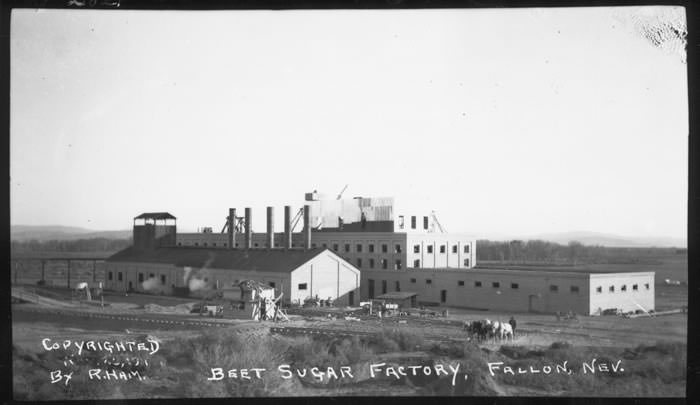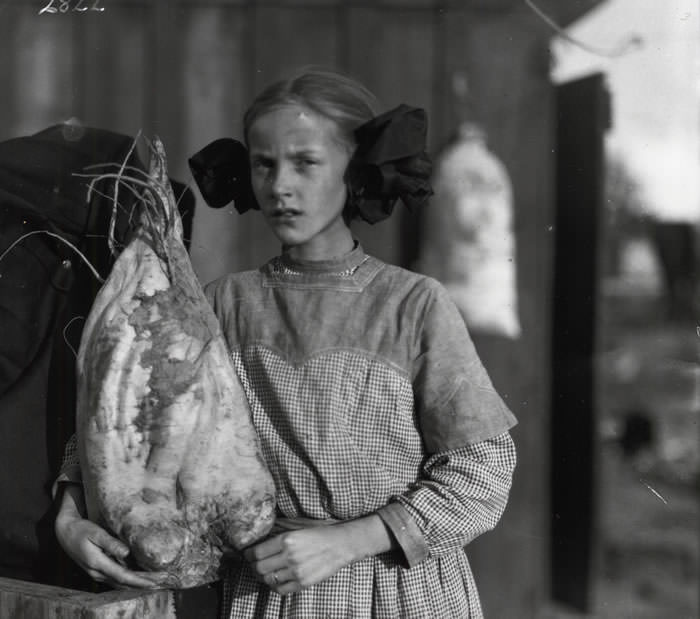edible traditions
BEET IT
A not-so-sweet story of Fallon’s sugar beet industry.
WRITTEN BY SHARON HONIG-BEAR
PHOTOS COURTESY OF UNIVERSITY OF NEVADA, RENO SPECIAL COLLECTIONS
When you think of Northern Nevada agriculture, Fallon probably comes to mind. Hearts of gold melons? Check. Alfalfa fields everywhere? Sure. A burgeoning wine and spirits industry? Impressive. Fields of sugar beets and a huge factory to process them?
What? you might say because this is a long-forgotten chapter in Fallon’s pursuit of cash crops.
Water brings potential
Agricultural development in the West can be traced to the Newlands Project. Launched in 1903, it meant irrigation from the Truckee and Carson rivers could now water about 57,000 acres of cropland in the Lahontan Valley, near Fallon and other Western Nevada lands. Water successfully attracted homesteaders and created communities. With the assurance of a stable water supply, the Hinze Brothers of California promoted growing sugar beets. They organized Nevada Sugar Co. in 1910 and opened a factory in Fallon, providing new opportunities for both farmers and factory workers.
Unusual beets
Sugar beets are not elegant. These monster-sized root vegetables can weigh more than two pounds. In high-elevation regions such as Nevada, with high daytime temperatures and cool nights, the quality of the sugar beet can be excellent.
The prospect of success was heralded to farmers throughout the area.
“There is practically no doubt but that it will be a financial success and will make possible the cultivation of thousands of acres that are today bare of crops,” read a hopeful editorial piece on May 11, 1910 in the Reno Evening Gazette. Thirty tons of seeds were imported from Bohemia (now Czech Republic) for planting.

Mammoth processing
Construction began on the building on Aug. 1, 1910, with plans for it to be in operation for the 1911 harvest. It was the largest commercial operation in Churchill County, at a cost of $600,000, and was designed to have a slicing capacity of 500 tons daily. The awkward-shaped beets were processed into liquid sugar and refined at a separate location into the granulated form for market. The factory could handle 75,000 tons per season, operating for 150 days annually.
Unfortunately, the plans didn’t work out that way, since two problems arose immediately: The beet plants became infested with a virus spread by leafhoppers, and, despite intensive promotion, not enough farmers signed on to grow the crop. The first sack of sugar was processed in 1912, but the yield was well below the projected goal. After the heavy financial investment, the plant closed in 1914 without producing a profit.
This wasn’t the end of the dream. George Wingfield, one of the state’s most powerful economic and political figures at the time, purchased the plant for $245,816 and reorganized the company with the Idaho-Utah Sugar Co. Again, only small returns were generated. The plant was closed from 1918 to 1926, but Wingfield and others persuaded farmers to expand their acreage, and for a short time, the crop was adequate. Then market prices fell, and profits again were elusive. Wingfield finally gave up in 1928. He sold the equipment to a San Francisco junk dealer. The plant itself reportedly was used for illegal whiskey making during Prohibition. In 1934, the building finally was demolished for its brick and steel. Although scientists developed seeds resistant to the leafhoppers and virus, most farmers returned their fields to alfalfa.
Interesting footnote
The sugar industry pops up as a quirky legislative footnote. In 1911, when hopes were high for the industry, the legislature bundled it into a Nevada Revised Statute allowing eminent domain. It would permit the seizure of land to construct pipelines for transporting the liquid sugar. The pipelines never were built, but the law remained until 2011, long after all dreams and products of the sugar beet industry had faded.
Sharon Honig-Bear was the longtime restaurant writer for the Reno Gazette-Journal. She is a tour leader with Historic Reno Preservation Society and founder of the annual Reno Harvest of Homes Tour.


